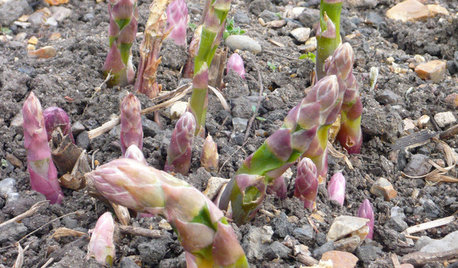Hybrid vs Mixes in Commercial Seeds
davemichigan
16 years ago
Related Stories

GARDENING GUIDESVegetables and Flowers Mix in Beautiful Edible Gardens
Ornamentals, meet your edible garden mates. We know you'll get along just beautifully
Full Story
WINTER GARDENINGExtend Your Growing Season With a Cold Frame in the Garden
If the sun's shining, it might be time to sow seeds under glass to transplant or harvest
Full Story
FARM YOUR YARDHow to Grow Vegetables in Containers
Get glorious vegetables and fruits on your patio with a pro’s guidance — including his personal recipe for potting mix
Full Story
FRUIT TREESHow to Grow Your Own Persimmons
Sturdy and easy to care for, these trees offer bright fruit through winter — and keeping them in bounds is no sweat
Full Story
COOL-SEASON CROPSCool-Season Vegetables: How to Grow Asparagus
Patience pays off with this harbinger of spring that lasts for decades in the garden
Full Story
EDIBLE GARDENSSummer Crops: How to Grow Tomatoes
Plant tomato seedlings in spring for one of the best tastes of summer, fresh from your backyard
Full Story
GARDENING GUIDESGreat Design Plant: Bouteloua Gracilis
Resilient blue grama grass thrives in sunny meadows and parking strips in the western U.S.
Full Story
GARDENING AND LANDSCAPINGUnexpected Edible Gardens
How to grow your own herbs and vegetables almost anywhere
Full Story
EDIBLE GARDENSSummer Crop: How to Grow Blueberries
Plant blueberries in spring or fall for garden beauty through three seasons — and a sweet superfood in summer
Full Story
GARDENING GUIDESHow to Find the Right Native Plants for Your Yard
Find plant maps, sale sites and guides that make going native in the garden easier than ever
Full Story





maineman
davemichiganOriginal Author
Related Professionals
Beavercreek Landscape Architects & Landscape Designers · Horsham Landscape Architects & Landscape Designers · Woburn Landscape Contractors · Tempe Landscape Contractors · Edwardsville Landscape Contractors · Fort Worth Landscape Contractors · Hayward Landscape Contractors · Milton Landscape Contractors · North Chicago Landscape Contractors · San Rafael Landscape Contractors · Tigard Carpenters · Parkland Fence Contractors · Prairieville Fence Contractors · Santa Ana Fence Contractors · Santa Barbara Fence Contractorsmaineman